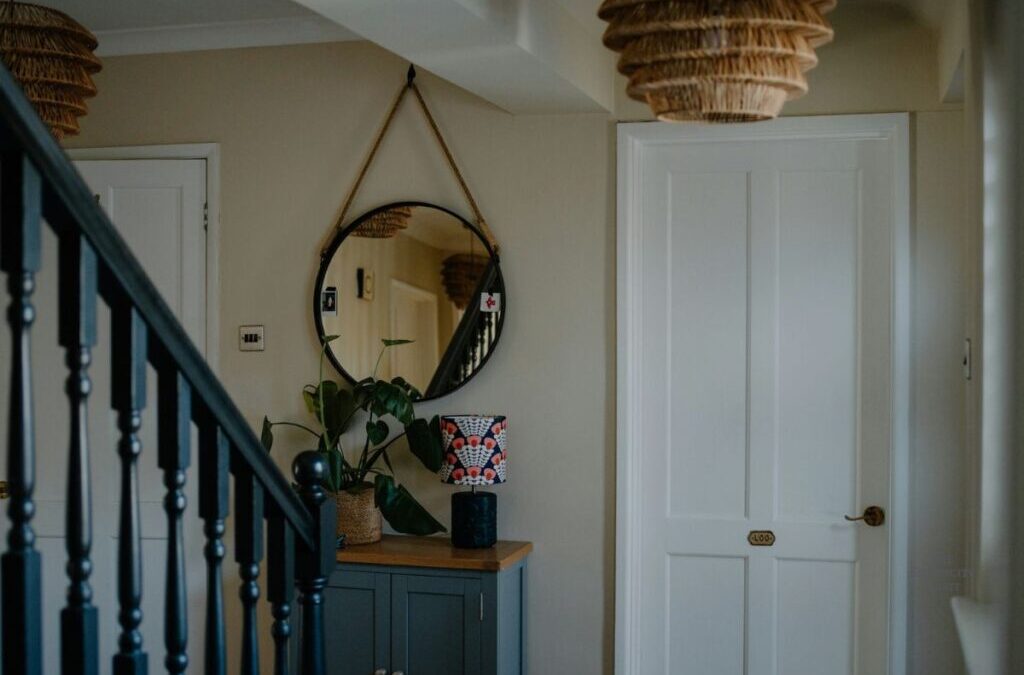Inside: Learn how to create order in your home quickly and easily with the ‘one-touch transformation’ micro-habit.
A guest post by Rose Morrison
You’ve walked past that entryway 10 times today. The coats are on the wrong hangers, a backpack is sitting in a muddy puddle, the shoes aren’t on the shoe rack — the list goes on.
Every time you see it, you want to scream, but you can’t seem to clean it because you’re just so overwhelmed.
What if there were a powerful method for creating instant order through micro habits?
The “one-touch transformation” micro-habit does just that. Learn how to implement it to create a more organized and peaceful home, one small action at a time.
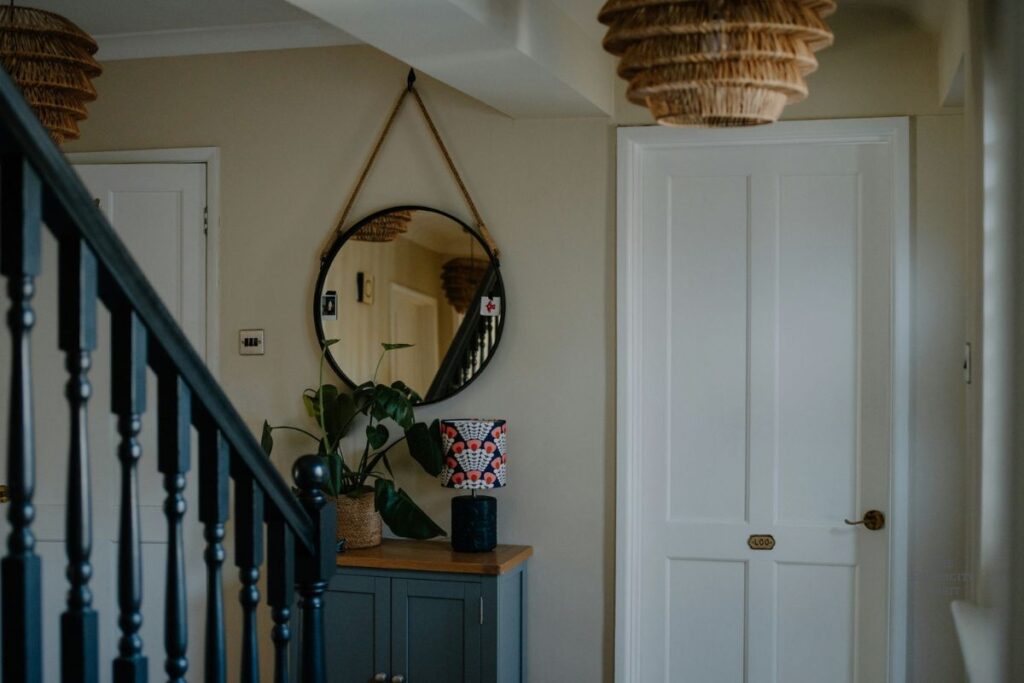
Understanding the “One-Touch Transformation” Micro-Habit
The core principle of the “one-touch transformation” micro-habit is that if you can complete a task in under two minutes, do it immediately rather than putting it off. Sounds simple enough, right?
The mental hangups that come with decluttering can often be troublesome, but here’s how this method addresses them.
The psychology behind the technique is that it overcomes procrastination. It helps you reduce feelings of overwhelm by breaking down tasks into manageable steps.
Doing the task immediately also builds momentum. Small successes create a positive feedback loop, encouraging further action.
This micro-habit can also reduce cognitive load since decluttering your home reduces mental stress and improves focus.
The “one-touch transformation” micro-habit works because it’s sustainable. Doing it over time keeps clutter from building up.
It requires minimal effort — two minutes as opposed to hours focusing on the mess but doing nothing about it. There is also a noticeable impact over time.
You’ll get used to having a cleaner space and be motivated to keep it up.

Implementing the “One-Touch Transformation” Micro-Habit
Now that you know the benefits of adopting this habit, here are some steps you can take to implement it into your daily life.
1. Identify High-Clutter Zones
It is essential to first identify where clutter accumulates most in your home. If you’re having trouble locating these spots, some common ones include entryways and kitchen countertops.
These spaces amass shoes, coats, mail, keys, appliances, dishes, and food items. A streamlined, decluttered kitchen should fulfill its purpose of blending practicality and connection with others.
Other places could be your bathroom or home office, which could fill up with toiletries, towels, makeup, papers, supplies, and electronics.
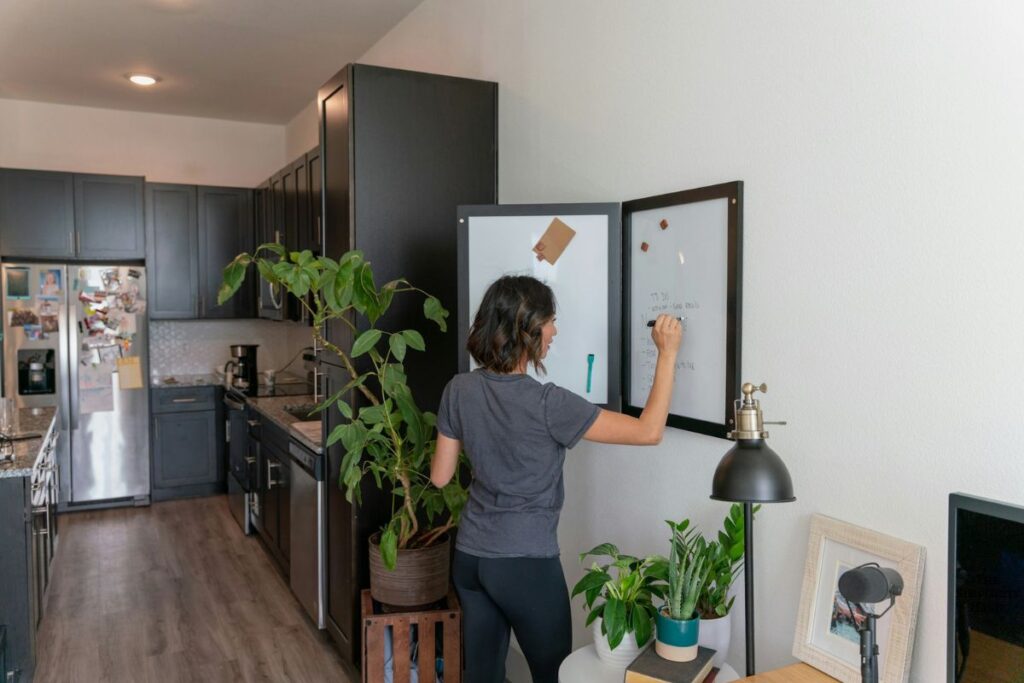
2. The Two-Minute Rule
This is where the technique itself comes in. Once you identify a problematic area, practice the two-minute rule by doing tasks immediately if they take less than two minutes.
This simple rule helps to prevent procrastination and keeps clutter from piling up in your home.
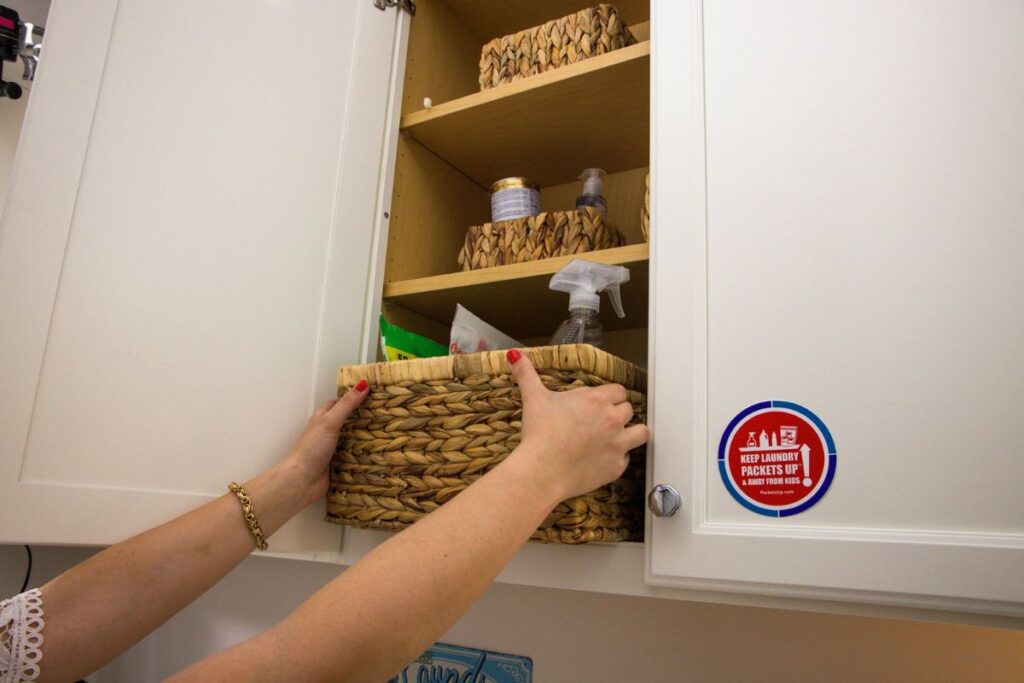
3. Create Designated Homes for Items
What if you want to put something away, but have nowhere to put it?
That is why having a specific place where certain things belong is so important.
If you want your home to be organized, everything in your house should have a designated home. Some useful items to procure are containers, baskets, and organizers for those stray items.
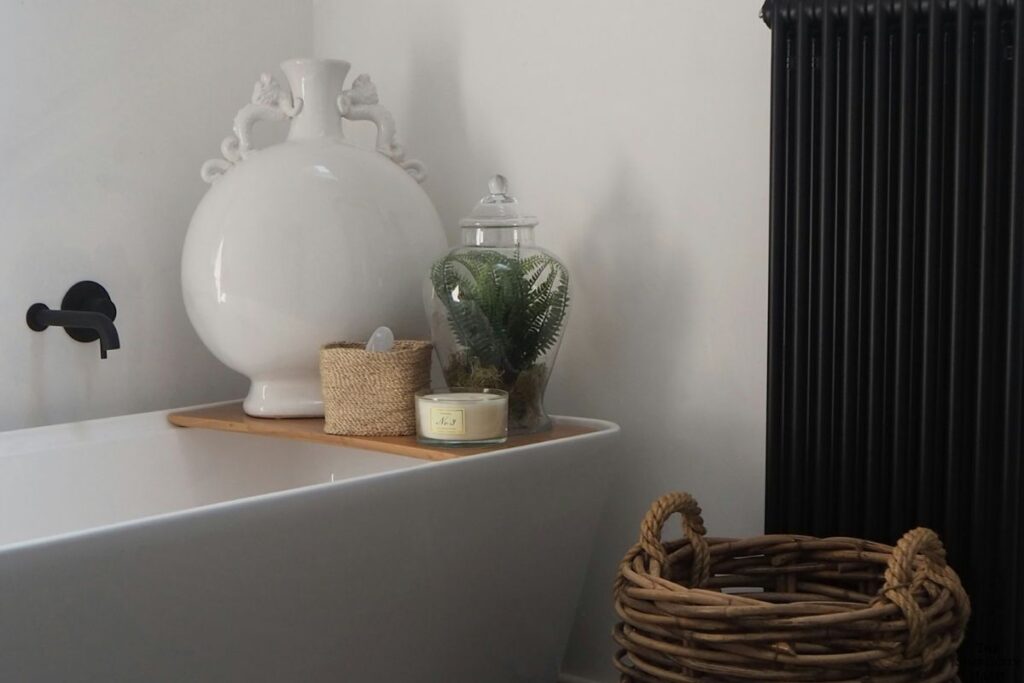
4. The “One-In, One-Out” Rule
If you tend to accumulate a lot of items all at once or over time, try this rule: for every object that comes into your space, remove a similar one.
For example, if you just bought a woven basket for your bathroom where you already have one in a different color, sell, donate, or recycle the old one.
This stops clutter from growing over time.
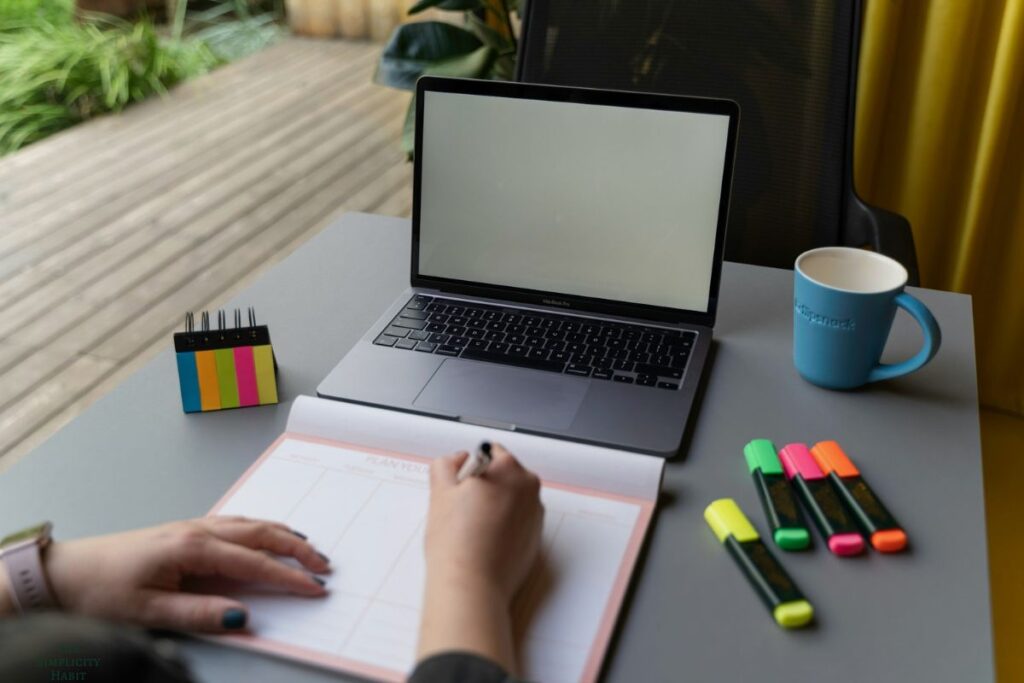
5. Make It a Habit
To keep the “one-touch transformation” technique a part of your daily routine and use the micro habit examples outlined above, set reminders, create visual cues, and reward yourself for consistency.
Habits stick when you’re consistent with them, and this simple action will keep your home neater and more organized with minimal effort.
The “Home Harmony Audit”: Noticing the Silent Disruptors
Beyond visible clutter, subtle maintenance issues can disrupt your peace of mind without you even realizing it. Do a quick scan of your home to identify minor repairs that need attention.
Some examples of these silent disruptors include squeaky doors, loose doorknobs, garage doors making strange sounds when opening and closing, and sticking drawers.
Identify which repairs you can handle on your own and which ones require professional assistance.
For example, a squeaky door may need just a bit of oil, and a loose doorknob just a quick tightening of the screws. But a noisy garage door can be a sign of a potentially dangerous issue, and not something you should try to fix yourself.
For instance, faulty cables or springs may make strange sounds and require immediate professional intervention.
Create a to-do list for all repairs and schedule a time to address them. That way, the task is out of your head and on paper.
Writing down your thoughts — especially stressful things like maintenance repairs — can positively impact your mental health and allow you to cope more thoughtfully and clearly with the situation at hand.
It is also important to do a check of the essential home systems in your audit to make sure everything is up and running smoothly.
Inconveniences like these can create a low-level hum of stress in your body that then impacts your overall well-being. Beyond that, preventive maintenance of these small issues can help avoid bigger problems in the future, which would cause more stress on you as a homeowner.
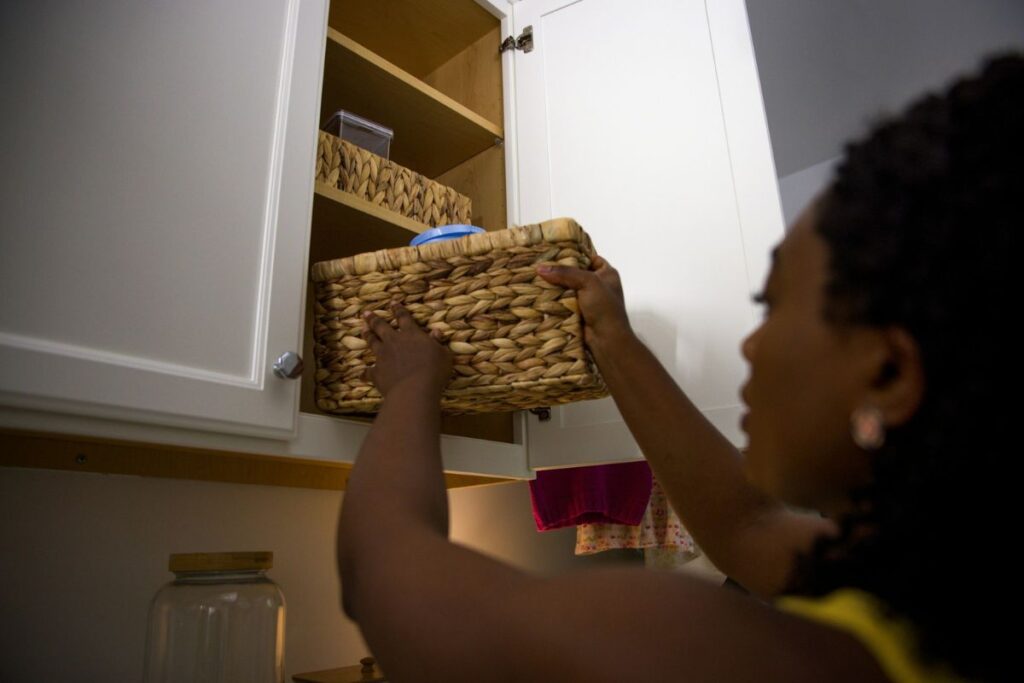
The Power of Consistency: Making It a Lifestyle
To properly maintain the “one-touch” micro-habit, remain consistent and reinforce the practice. Small actions over time create positive outcomes.
The more you do something, the more habitual and easy it becomes. With consistent action, you can create micro habits that actively declutter your home without even thinking twice about it. Self-motivation is an important part of this process, too.
Celebrate your progress with a reward of your choosing and stay committed to creating a more organized and peaceful home.
How to Overcome Your Biggest Challenges
One of the biggest challenges you might face is time. You could have a full-time job, kids to take care of, or other responsibilities that create a busy schedule.
If that is the case, try to find moments in between to do small tasks. One of the benefits of the “one-touch” micro-habit is that most tasks can be completed in under two minutes. Pepper a few, or even just one, into your busy day.
Still feeling overwhelmed? Break down tasks into even smaller steps. Keep breaking them down until they feel doable.
If you feel unmotivated to get up and do these tasks, remember the positive impact this technique will have on your well-being.
Imagine a clean house with minimal clutter. Also, set a timer for two minutes and stop on the first few days after the two minutes to break the procrastination cycle.

How to Live a Simple Life
The key benefits of the “one-touch transformation” micro-habit include less clutter and a simpler, relaxed atmosphere in your home.
Micro habits have the power to create lasting order and peace of mind. Start implementing the technique and experience the transformative power of small actions.
How will you use the ‘one-touch transformation’ micro-habit in your home?
Sign up on the form below to get weekly decluttering tips and inspiration sent straight to your inbox. You’ll also get the free 5 Areas to Declutter in 10 Minutes Checklist to help you get started decluttering today.

